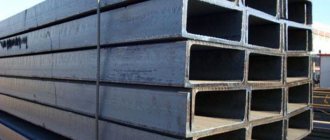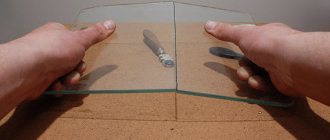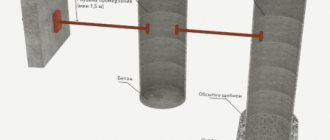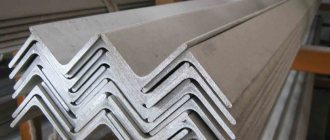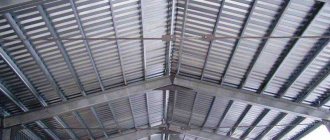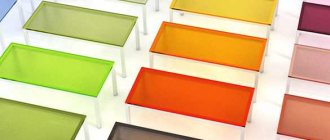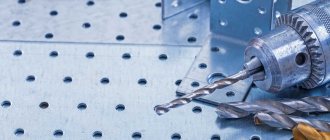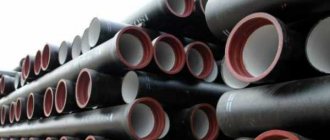People come into contact with glass products every day. Glass is an almost magical object - transparent on one side, and a material object on the other. A substance will be transparent when photons (light quanta) pass through it without being absorbed. But for some reason, not everyone comes up with the idea - how and what is glass made from? How does the process work?
Interesting Facts:
- It will take a million years for glass to decompose.
- Glass is recycled without loss of quality.
- The thickest glass in the world is the 26 cm screen of the Sydney Aquarium.
How is glass made?
First, quartz sand, soda and lime are heated in a special furnace to a temperature of 1700 degrees above zero. The grains of sand connect with each other, then homogenize (turn into a homogeneous substance), and the gas is removed. The mass is “dipped” into molten tin at temperatures above 1000 degrees, which floats on the surface due to its lower density. The smaller the mass that goes into the tin bath, the thinner the glass that comes out will be.
Glass making
The finishing touch is gradual cooling. The substance is placed in a special conveyor, where it is cooled to a temperature of 250 degrees above zero. Why glass is transparent can be read here.
Interesting Facts:
- Murano glass is considered the most expensive in the world. Products made from it cost millions of dollars. Since ancient times, Venice has been famous for the production of high-quality glass. It is reliably known that in the 13th century the state government moved production to the large island of Murano, and the craftsmen were strictly forbidden to leave it. The punishment is a death sentence. In addition, entry to the island was also closed to tourists or other residents of Venice. Such strict measures made it possible to maintain the secret of production.
- One of the most interesting mental illnesses of the Middle Ages is the “glass disease.” A person with such a disorder thought that he was made of glass and was afraid of breaking. The French king Charles VI suffered from this disease. The monarch always wore several layers of clothing and forbade anyone to touch himself.
What functions do soda and lime perform in the production process?
Lime
Soda helps reduce the melting point by 2 times. If you do not add it, it will be very difficult to melt the sand, and, accordingly, to connect individual grains of sand with each other. Lime is needed so that the mass can withstand water. If it had not been included, the window, for example, would have dissolved immediately after the first rain, and the glass would have burst after contact with water.
Interesting: Why do animals like to be petted? Reasons, photos and videos
Interesting Facts:
- China did not produce glass for more than 500 years, from the 14th to the 19th centuries. Now the state is one of the leaders in production and controls a third of the world glass market.
- 1994 was a very active year for glass recycling in the United States. If you put all the glass products recycled during that year in one line, you will get a kind of “road” to the Moon.
Molding technology
The next step is to obtain a workpiece of a certain shape from the melt. Most often, this is sheet glass of a certain thickness and linear size. The modern glass industry has two technologies for producing sheet glass:
- Fourcauld method;
- Float method.
Fourcauld method
Fourcaud's technology received its name in honor of the French inventor who first introduced this method into production at the beginning of the twentieth century. This technology is based on the method of gradually drawing molten glass from a glass furnace through special rollers. As a result of continuous rolling of the glass mass, a long sheet was obtained. As it was drawn out, the melt entered a special chamber, where it was gradually cooled by blowing heated air.
Then the cooled glass tape is cut into sheets of the required size using special glass-cutting machines. The thickness of the glass sheet is adjusted by changing the speed of drawing the melt from the furnace. Due to the peculiarities of its manufacture, such glass was called “drawn”. Glass production using the Fourcaud method, despite its technological backwardness, is still used today. True, this technique is increasingly losing its position in the glass industry to another technology - the float method.
Float method
The production of sheet glass using the float method is a more modern method than the drawing technology. The name of this method comes from the English word “float”, which means “to float”. The inventor of this technique is considered to be the British glass industry, which was the first to develop and introduce into production this method of producing sheet glass. A little more than half a century has passed since the invention of the float method, but today it has become the main technology, replacing the Fourcaud pulling method everywhere.
A special feature of this method is the production of sheet glass by molding it on the surface of a metal melt. From the melting furnace, liquid glass is poured into a bath filled with molten tin. The glass melt, being lighter than tin, spreads over its surface, gradually solidifying. This is achieved by the fact that the melting point of tin is much lower than that of glass - a glass sheet is formed on the surface of liquid tin. Its thickness is determined by a certain volume of liquid glass poured into the bath, and the configuration of the sheet is determined by the shape of the bath itself. The production of sheet glass using the float method is today the main technology in the glass industry not only in Russia, but throughout the world.
How is colored glass made?
Not only colorless glass is produced. To obtain a colored product, in addition to the main components, chemical compounds are added to the melting furnace:
- Iron oxides give glass a rich red tint.
- Nickel oxides – brown, purple (depending on quantity).
- To get a bright yellow tint, add uranium oxides to sand, soda and lime.
- Chrome makes glass green.
What characteristics and properties does glass have?
The proportions of components for the manufacture of glass goods are selected depending on their purpose. They are distinguished: household glass - that which is then used to make dishes, glasses, jewelry; construction – shop windows, windows, stained glass;
Technical glass is the densest. Used in heavy industry. The main property of glass is the ability to transmit sunlight through it. But not completely. Thus, standard window glass allows only 85% of sunlight to pass through. Glass has low thermal conductivity; in other words, it does not get too hot from other products. This property is widely used for the use of glass in fireplaces (household appliances - stoves and ovens).
Interesting fact: Everyone has heard of armored (bulletproof) glass. The process of its production looks like this: several glass layers are connected to each other, fixed with polymer films and sent to the oven. The first bulletproof glass was installed on the windows of the White House in 1941.
Glass is an amazing material. The process of its creation is complex and traumatic, but interesting and very necessary.
Glass production is a labor-intensive process that includes a number of stages
- Preparation of raw materials
As already mentioned, silicon (quartz) sand is the main component in glass production. The fewer impurities it contains, the more transparent the resulting material will be.
At this stage, the silicon sand is sifted, sorted, washed in special drums with clean water, after which the washed sand enters the conveyor, which also sifts the contents.
Next, filtration occurs - the sand enters spiral-shaped rotating vertical gutters. As a result of the treatment, the metal particles remain in the chute, and the cleaned sand flows onto a rotating conveyor, where the cleaned sand is subjected to hot air treatment - this part of the preparation is called drying.
- Batch preparation
Batch is a prepared mixture of raw materials in given proportions, subject to processing. At this stage, the remaining components of the charge (calcium oxide, sodium carbonate, aluminum and magnesium oxides, lead oxide) are added to the dry and purified sand for placement in a furnace for melting glass. Before the cooking process, broken glass can be added to the sand for recycling.
- Melting of glass melt
This is the main and most difficult part of glass production; it is produced in special furnaces made of refractory materials. All components are carefully sifted, if necessary, crushed to a powdery mass and placed in an oven. The process takes place at a temperature of 1500 - 1600 ° C. First, the charge is converted into a viscous mass with a large number of gas bubbles, which will be removed a little later, with an even greater increase in the temperature in the furnace.
To increase water resistance, lime or calcium oxide is added. To make glass stronger, magnesium or aluminum oxides are added to it. To give the glass the desired shade, oxides of various metals are used (for example, copper oxide will give it a greenish tint, iron oxide - rich red, uranium oxide - bright yellow, nickel oxide, depending on the amount - brown, purple).
- Cooling of glass melt
The process consists of reducing the temperature of the melt to a state of viscosity. To do this, the treated mixture is poured into baths filled with molten tin. The smaller the mass entering the bath, the thinner the glass will be. The temperature of liquid glass is higher than the temperature of tin, so it spreads over the surface of the tin and cools.
A special roller pulls the softened glass out of the bath and feeds it further.
When a product is cooled unevenly, internal mechanical stresses are formed in it, so a workpiece that cools too quickly can collapse from any impact or temperature change. To give the glass greater strength, after cooling it is heated again, this is the so-called annealing. Cooling is carried out according to a special step mode: fast, very slow and fast again.
An interesting step is cutting the glass sheet. The sheet is fed by continuously moving rollers to a cutting device (diamond or hard alloys), which applies a sufficiently deep and clean cut line (“notch”) of a given configuration.
glass rainbow
Crushed quartz (sand) in its natural form contains a small admixture of iron, which gives finished products in the future a light green tint. To make the material transparent, selenium is added to it. This substance gives off reddish tones, but when mixed with iron, the glass surface turns out colorless. And what is glass made from in different shades, and sometimes not even one color, shimmering with all the colors of the rainbow?
To give the material color, metal oxides are added to the heated mixture. Cobalt will give rich blue colors. The product will sparkle with purple shades if manganese is added during the manufacturing process, and green will come from a mixture of chromium and iron. For sunny yellow color chromium oxide is suitable, for emerald green - chromium and copper oxides. Which components are added depends on the purpose of the glass plant.
First window glass
The first window glass, truly flat glass, first appeared much later, in Ancient Rome. It was discovered during excavations at Pompeii and dates from the year of the eruption of Mount Vesuvius, 79 AD. e. Window glass was produced by casting onto a flat stone surface. Of course, the quality of the glass was very different from modern glass.
This glass was colored in greenish tones and matte (at that time they did not yet know how to make colorless glass), contained a large number of bubbles, which indicated a low cooking temperature, and was quite thick (about 8-10 mm). But, nevertheless, this was the first case of glass being used in architecture, which gave a significant impetus to the further development of glass making and the spread of glass throughout Europe.
Application of glass
Glass products are used in many areas of human activity. In some, its hardness is important, in others - transparency, quality is valued equally everywhere.
Directions for glass application:
- Optics. The highest priority is given to the transparency of future optical elements. Used in scientific, military, aerospace activities and for the production of consumer optics.
- Clear glass. They are actively used in construction for the construction of lighting structures.
- Colored glass is the basis for creating stained glass and other mosaics.
- Art glass. This type is used to create original decorations and interior elements.
- Glass enamel. This is a durable material with high abrasion resistance. It is actively used for coating ceramic tiles, bathtubs, faience sanitary ware, and galvanic baths.
- Fiberglass, fiberglass. They are used to produce glass wool, fiberglass laminate and other materials.
- Optical fiber. It is used to make special threads for communications, the Internet, and television networks.
- Photochromic glass. This type of glass is used to protect from light. Used in the production of sunglasses and for darkening windows in public transport.
- Dielectric glass is actively used for the production of insulators in the electrical industry.
Glass substrate sorting
Before making glass , the sand is sifted and sorted. Raw materials of poorer quality are used for the production of window glass, while the best are used for the manufacture of tableware, jewelry, optical lenses and artistic products. The difference in the size of the grains and the chemical composition affects it: the finer the sand, the wider the scope of its application. If large grains of sand predominate, then such sand is the main raw material for window glass.
Glass at home
Craftsmen can make glass even at home. First you need to calculate the proportions of the components. Having studied what glass is made from, the composition of the future glass mixture includes: sand, soda, lime, broken glass.
Here's how to make glass for your home:
- Preparation of main components. You need to heat 180 grams of baking soda over a fire until the moisture evaporates. Heat 400 grams of sifted, washed sand over a fire and dry. Grind 80 grams of lime. Pour into one bowl. Add 10 grams of boric acid and two table salts.
- To make glass yourself, you need to prepare a container. To maintain integrity in high heat, it is advisable to coat metal dishes with a mixture of liquid glass and clay in several layers. To do this, mix a few tablespoons of modeling clay with water until liquid. Then add one or two tablespoons of liquid glass. Using a brush, coat the dishes.
- Heat the coated vessel with gas. Its surface will be covered with convex “pimples”.
- Prepare broken glass: sift the broken dishes. Place three tablespoons of small glass particles in a cooking vessel. Add the rest of the raw materials.
- Place the resulting mixture on the fire. You can blow it with a forge. After three to four hours, the mixture will melt to a liquid glass consistency.
Glass brands
Large manufacturing companies produce a wide range of sheet glass types. This is due to the popular glazing of large office and retail buildings in major cities. Therefore, manufacturers often use GOST No. 111-90 “Sheet glass. Technical conditions".
According to their intended purpose, glass is divided into the following grades:
- M1 - mirror improved. The thickness of the products is no more than 6 mm and no less than 2 mm. Designed for car windshields and high-quality mirrors.
- M2 - mirror. Used for the production of mirrors and glass in public transport.
- M3 - polished technical. They produce decorative furniture elements and mirrors.
- M4 - polished window. Serves for high-quality glazing of translucent, safety glass structures of vehicles.
- M5 - unpolished improved window. Used for glass of agricultural vehicles.
- M6 - unpolished window. Used to create translucent structures.
- M7 - polished display case. Thickness ranges from 6.5 mm to 12 mm. Used in the design of shop windows and stained glass.
- M8 - unpolished display case. Showcases and lanterns are made from it.
Production technology
The main material for glass production is quartz sand.
Yes, the same one that is strewn with sandy beaches and on which you can happily walk barefoot in the summer. Glass production begins with the precise amount of tiny quartz measured on an electronic scale being heated to a temperature of over 1500 degrees C. The grains of sand melt, forming a homogeneous mass. Soda ash and limestone are added to them in small quantities. For what purpose?
Soda ash acts as a catalyst in this process and causes the sand to melt at a lower temperature, approximately 850 degrees C. This reduces energy costs for production. But soda is not used without limestone. This fact is explained simply: molten sand and soda ash, when solidified, form a substance that easily dissolves in water (not the best material for the production of household items). Magnesium and aluminum oxides and boric acid are also added here. As well as a number of substances that prevent the formation of air bubbles in the mass.
After all the components are brought to a certain temperature, sharp cooling follows - this will prevent the grains of sand from returning to their original form.


